Power line technology Empower industrial intelligence
Source:网电科技官网 Time:2024-07-24 13:55
Power line technology
Empower industrial intelligence
一、Process trends in industrial manufacturing
1. Production flexibility demand becomes the mainstream
In the last century, human beings created a new model of factory production of assembly lines, reducing the production cost of a unit of product, making some expensive consumer goods popular with the public. However, with the change of people's consumption characteristics, the personalization of products is becoming the mainstream of consumption, and the flexible production as a small-batch multi-category plays an increasingly important role in the manufacturing industry.
Flexible production meets the needs of customized products, and the power carrier provides a more reliable OT network.
Compared with rigid production, flexible production can quickly switch production lines, and has the advantages of flexibly meeting customer customization requirements and greatly shortening the production cycle. After the introduction of power carrier technology into the OT network of the core production environment, the advantages of power carrier network compared with Wi-Fi in reliability, low delay and fast and convenient networking will be fully reflected, so that the advantages of power carrier technology can realize value in large-scale commercial scenarios, better promote the development of flexible production, and enhance the market competition of enterprises.
2. Flat architecture
At present, the industrial control system is mainly based on the traditional five-layer architecture, namely, the enterprise layer, the management layer, the operation layer, the control layer and the field layer. The production lines in the industrial control system are independent of each other, and the production data is uploaded by the controller to the upper layer of the IT network for centralized processing. Under this architecture, IT will be difficult for the upper layer of the IT network to reach the production system in the field layer, and a large number of production data will precipitate and disappear in the industrial control layer, which cannot be further utilized. In addition, it will not be possible to carry out deep collaboration between the production lines. Therefore, enabling global data flow between IT network and OT network has become one of the development trends of industrial control network.
3. Less human and no human
Automation has always been the core of industrial development, but also the future direction of industrial control field development, cloud computing, AI and other new technologies are accelerating this trend. As China's aging rate continues to rise, the labor cost of manufacturing industry continues to rise, and the role of less humanization in the production process gradually appears. The purpose of less humanization is not to reduce the number of personnel, but to reduce the number of personnel who are repeatable, low value-added or engaged in dangerous work through less humanization and unmanned way, and train the reduced personnel to adapt to higher value-added positions to create greater value for the enterprise. The less humanized and unmanned demands of the process manufacturing industry such as coal mine, steel and cement and the port, construction, cold storage and other industries are mainly reflected in the lifting and transportation applications, such as the use of remote control of steel mills, unmanned vehicles to achieve the full process automation of logistics sorting. This type of application used to be remotely controlled through optical fiber or Wi-Fi connection, but the deployment distance of optical fiber is long, the cost is high, the reliability of Wi-Fi is not high, and the coverage distance of outdoor scenarios is limited, so the power carrier technology is gradually entering this type of application scenario, providing flexible and reliable wired connection.
4.Technical requirements and challenges
In the process of recombination, the flexible production line should minimize the skill requirements of the operator, that is, the intervention and input of other technicians are not required in the process of recombination. Based on such requirements, the design of the flexible production line has certain technical requirements and challenges, including:
a. Flexible and fast communication configuration: Based on flexible production lines, all stations become mobile stations, and the original wired network connection of each station faces great challenges. For example, as the physical location of the station changes, the wired gateway that needs to be connected is different, and the VLAN configuration of the port that needs to be connected is different. These configurations require IT personnel to intervene in each production line adjustment process.
b. High reliability and low delay of power line communication: Based on flexible production lines, PLC centralization will also be more widely used, and PLC centralization will lead to the industrial bus RT (Real-time) communication of PLC and IO equipment is carried on the power carrier network, and the industrial bus has higher requirements for reliability and delay, reliability usually needs to reach 99.99% and above, based on different applications, Latency requirements range from 50ms to as low as 10ms.
c. Convenient connection of gas and electricity: The flexible design of the production line also needs to consider the "wireless" of the connection of electricity and gas (power carrier technology is transmitted through the existing power line to the network), such as the use of quick plug connectors to achieve simple and flexible connection operation.
5.Driving force using power line technology
Compared with wired/wireless networking, the multi-station connection of flexible production lines is supported by power carrier technology with higher flexibility. In the process of production line adjustment, IT personnel do not need to be involved in configuration adjustment, production line staff do not need to plug and remove network cables and detection work, can achieve complete flexibility of network connection. Compared with Wi-Fi networks, power carriers can provide higher reliability, more terminal connectivity and lower latency. Thus, it can better carry the control signaling communication of OT network and support more production line equipment to access the network directly based on power carrier technology.
二、Power line technology in different industries
1. Power line unmanned vehicle application in aluminum plant
Aluminum processing industry as a labor-intensive industry, a large number of jobs rely on labor, especially in the reservoir area. Personnel for a long time fatigue operation, high safety hazards, low efficiency.
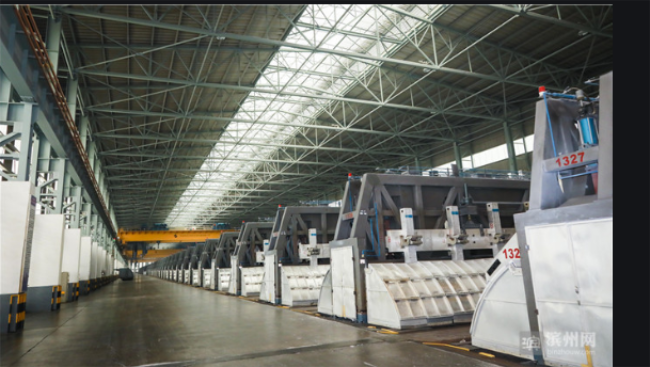
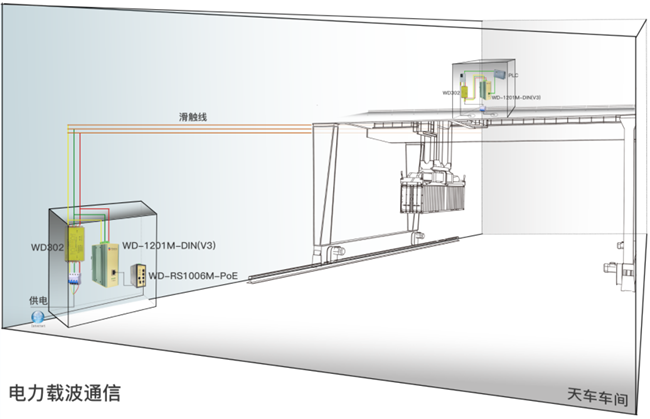
As the main handling equipment of the production workshop of the aluminum processing plant, the safety and reliability are very important, and its operating efficiency will directly affect the production capacity. The complex field environment (large current, large magnetic field) brings many safety problems to the operation of the equipment. As a part of the traffic control architecture, the communication network plays a crucial role, especially in the management system of the unmanned vehicle reservoir area, which not only relates to the flexibility of the system architecture, but also determines the stability and safety of the entire project. Based on such requirements, the communication network for unmanned vehicle applications in aluminum processing plants has certain technical requirements and challenges, including:
a. The particularity of the site: based on the traditional industrial Wi-Fi solution, due to the strong magnetic field on the site, the wireless signal is affected, and the stability of communication cannot be guaranteed. The power carrier is transmitted through the existing power line, and the OFDM technology can ensure the stable transmission of the signal and is not affected by the space magnetic field.
b. High reliability and low delay of power line: as a special production equipment, the requirements for network quality are also high. When the crane slab moves, the unstable network will cause the train to stop abruptly, which will bring about great security risks. At the same time, before the sudden safety accident on the ground, it is necessary to quickly stop the traffic operation in the reservoir area or the central control room to ensure that the traffic operation is stopped before the accident to avoid more accidents. Based on such business requirements, the communication delay between the central control room PLC and the driving PLC should be less than 50ms, the continuous packet loss is less than 3, and the average packet loss rate is less than 1%. The delay between the emergency braking IO and the central control room safety PLC is required to be 10ms.
As a mature technology, power line communication technology has been put into use in a number of unmanned vehicle projects, which also ensures the reliable operation of the project. In the future, power carrier technology, as a technical solution that can replace Wi-Fi, has controllable interference coordination ability, and it is easier to achieve the standardization of unmanned driving system solutions and rapid on-site deployment. In addition, the power line network has better reliability and low delay capability, which are better suited to the needs of unmanned driving applications.
2. Three-dimensional storage application based on power line
Intelligent logistics and warehousing automation has been listed as one of the five core intelligent manufacturing equipment in China's key development, which has been highly valued by the government and manufacturing enterprises, and more and more manufacturing enterprises are or are preparing to implement intelligent logistics construction projects. To realize the interconnection and deep integration of intelligent logistics system and intelligent manufacturing system has become a topic that cannot be ignored. With the widespread use of automation technology and information technology in automated three-dimensional storage, the development of three-dimensional storage shows the following trends:
a. The automation level of warehousing operation management will gradually improve, and intelligent and information technology will be more applied;
b. Storage operations are developing in a flexible direction;
c. Three-dimensional storage will be more dependent on the security and speed of the network
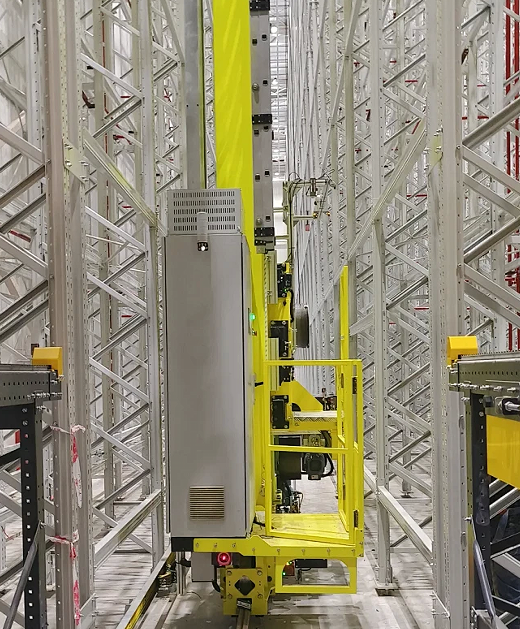
In the early stage of construction, the interconnection and data exchange between many equipment should be considered. Especially after the establishment of the library, the warehouse is like a huge barrier, preventing or reducing the transmission of wireless signals such as Wi-Fi, so a reliable and effective signal transmission method is particularly important.
Three-dimensional storage based on cable networking, there is a large number of cable deployment, there will be a long deployment cycle and cable costs. In addition, equipment such as three-dimensional storage stackers are in the process of high-speed movement all year round, and the wear of cables is also large, which may affect the stability of the entire system. The communication connection mode based on power carrier technology can save the deployment cycle of automatic three-dimensional storage and reduce network operation and maintenance problems. The low delay and high reliability of the power carrier network can also fully meet the requirements of the automated three-dimensional storage network, and better support the operation of various mobile terminals.
1. The coverage capability of power line technology: all equipment in the three-dimensional storage is metal equipment, and the metal equipment itself is a shield, which affects the coverage of wireless communication in the three-dimensional warehouse. In addition, the stacker, RGV and AGV in the three-dimensional storage are all equipment that is always in a moving state, and it is particularly important to ensure the stability of the signal in the moving state.
2. Low delay capability of power line technology: the equipment in three-dimensional storage is fully automated equipment. From receiving instructions from warehouse management software to executing instructions, the network delay has a great impact on the efficiency of the final storage equipment, and the lower the delay, the higher the execution efficiency.
3. Circular shuttle car application based on power line
Multi-layer and circular shuttles can be used as peripheral equipment of three-dimensional warehouses to realize automatic connection with other logistics systems, such as exit and entry platforms, various buffer stations, conveyors, lifts and robots; It can also be used as an independent system to carry out material handling according to the plan, and the circular shuttle (or circular logistics vehicle, circular conveyor) is playing an increasingly important role in automated warehousing and logistics systems.
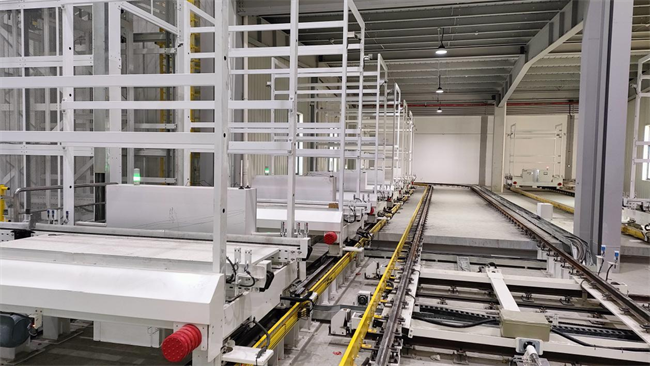
In the early stage of construction, the circular shuttle system should consider the high-speed operation of many cars, large data volume, delay and other problems. In complex environments such as large warehouses, signal coverage and stability, as well as delay and timeliness, are necessary conditions to ensure safe, efficient and reliable communication of multi-layer, circular shuttle systems.
The circular shuttle is in the process of moving at high speed, and the wear of the cable is also large, which may affect the stability of the entire system. The communication connection mode based on power line technology can save the deployment cycle of automated three-dimensional storage peripheral equipment and reduce network operation and maintenance problems. The low delay and high reliability of the power line network can also fully meet the requirements of the network communication for the automatic three-dimensional loop, and better support the operation of the mobile terminal.
4.Logistics sorting application based on power line
In recent years, the continuous improvement of online consumption has led to the rapid expansion of e-commerce, express delivery and other industries. With the blowout development of e-commerce and express delivery, consumers' demand for large-sized logistics has also been upgraded, and the demand for express transportation market has grown rapidly. With the continuous upgrading of consumer demand, the express delivery and express transportation industry will be transformed, which corresponds to the operational efficiency, accuracy, stability, flexible sorting and other capabilities of the automatic sorting system for large transit centers.
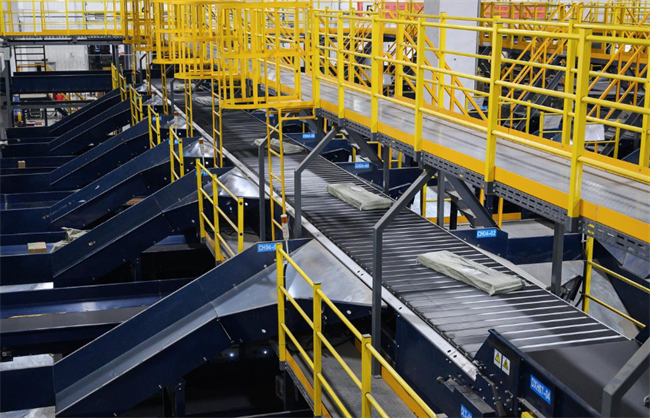
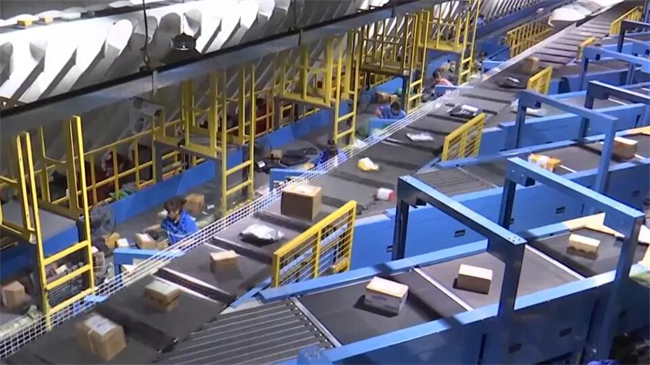
In order to prevent parcel loss or delay in the sorting process, ensuring the accuracy of sorting is extremely important for customer satisfaction. At the same time, an efficient sorting system usually requires a large amount of initial investment and continuous operating costs. How to control costs while ensuring efficiency is also a key issue. Prevent or affect the transmission of wireless signals, so a reliable and effective signal transmission method is particularly important.
Therefore, the power line technology uses the existing power line (slip-touch line) at the sorting site for data transmission, without additional wiring, saving infrastructure construction costs. The application of power carrier technology in logistics sorting system has a number of advantages, as follows:
1. Rapid deployment: there is no need to build a new communication network, and the communication system can be quickly deployed using existing power lines (sliding touch lines), reducing the installation and commissioning time.
2. High flexibility: The network layout can be flexibly expanded and adjusted to meet the needs of different sorting centers.
3. Reduce costs: Avoid the high cost of laying special communication cables, and reduce the overall maintenance cost of sorting equipment in the later stage.
4. Simple maintenance: Using the existing power network for maintenance, relatively simple and low cost.
5. Anti-interference ability: power line technology has strong anti-interference ability, which can be stable and reliable in the case of electrical noise in the power line.
6. Delay: Power line communication( PLC )can achieve low-delay data transmission, which is suitable for the sorting process with high real-time requirements.
5. Smart garage application based on power line
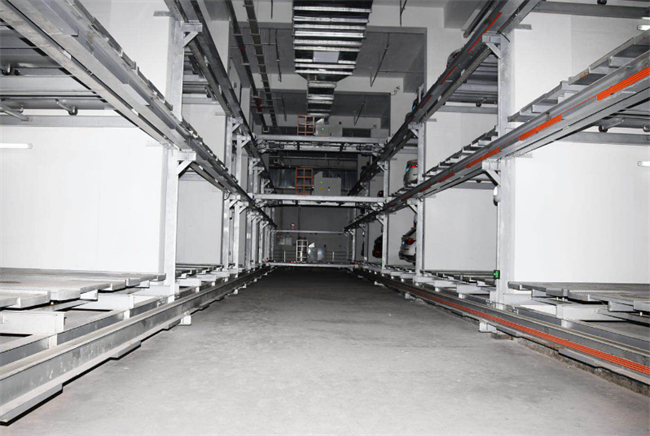
Features: The use of power line technology, the use of power sliding line to achieve network communication, control the translation car, elevator and other terminal side equipment.
6. Inspection robot application based on power line
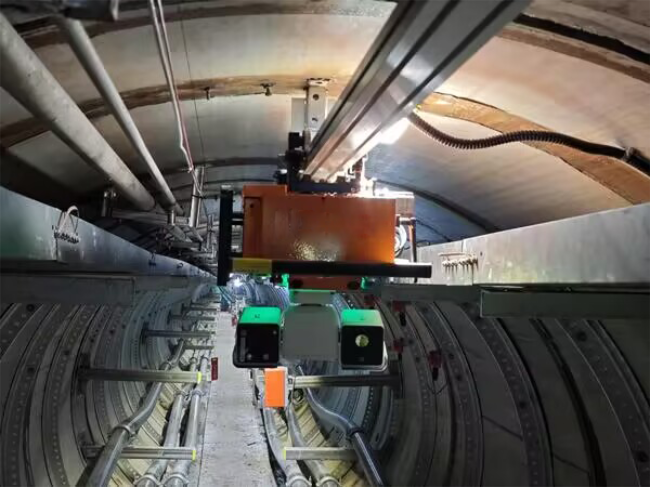
Motion control requires very high reliability and ductility of the network:
1. High latency requirements for communication:
2. Terminal timing and synchronization: multi-axis motors need synchronous coordination, and wireless networking also needs to ensure the synchronization of each terminal, so the terminal timing function becomes necessary.
Motion Control has always been one of the key target application scenarios of power carrier technology, and it is also a demand-driven scenario for URLLC Ultra-Reliable Low-Latency Communication.
三、Industrial site environment application topology
The industrial powerline Ethernet data transmission system of Kunshan WonderTek is composed of Powerline Ethernet Bridge (PEB), power line (sliding touch line/Conductor) or guide rail and terminal control equipment, supporting Profinet, EtherNet/IP, Modbus TCP and other industrial protocol stacks. The PLC can be set in master (DM)/slave (RD) mode.
1. On-site power environment is DC:
 2. The on-site power environment is single-phase: 1 live line (L)+1 neutral line (N)+1 Ground line (PE)
2. The on-site power environment is single-phase: 1 live line (L)+1 neutral line (N)+1 Ground line (PE)

3. The onsite power environment is three-phase: 3 Live line L1 L2 L3

四、Application field
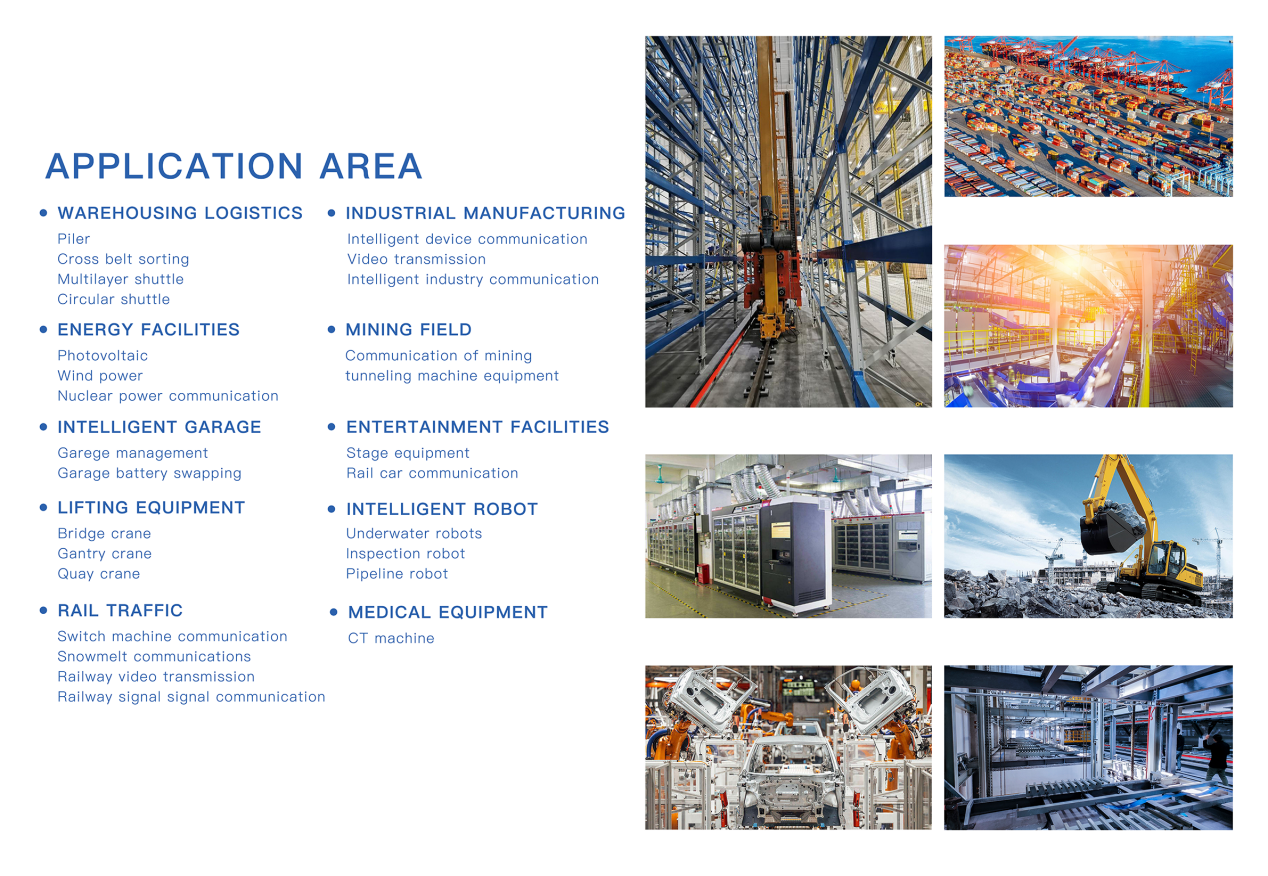
Next:None












 Learn more
Learn more